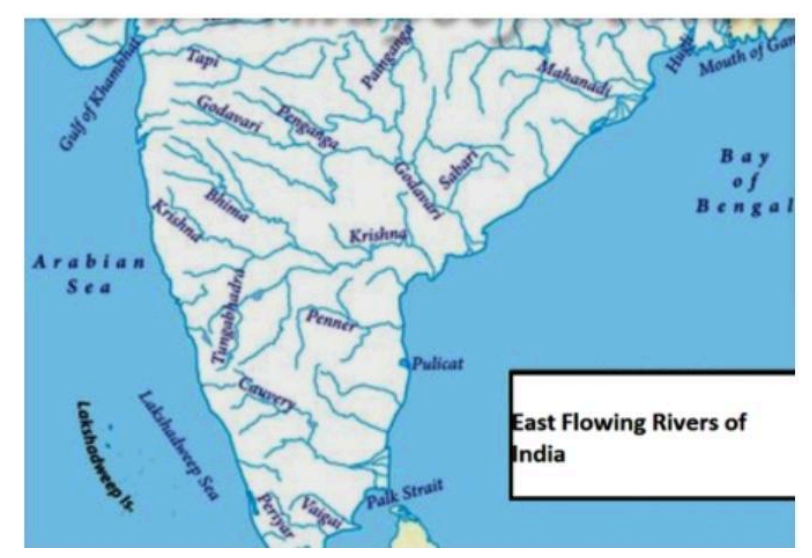
India is blessed with a diverse network of rivers, each contributing significantly to the country’s geographical, ecological, and cultural tapestry. Among these, the east-flowing rivers hold a distinct prominence, coursing through the expansive landscapes of the eastern region. Characterized by their origin in the central and eastern parts of the Indian subcontinent, these rivers traverse through lush plains, rolling hills, and dense forests, ultimately emptying into the Bay of Bengal. Their journey shapes the geography and sustains the livelihoods of millions along their banks. The salient features of these east-flowing rivers encapsulate not just their hydrological significance but also their cultural, economic, and ecological importance in the vast mosaic of India’s riverine systems.
Contents
Answer
Introduction:
East-flowing rivers in India refer to those rivers that primarily flow towards the east, draining into the Bay of Bengal. These rivers play a crucial role in the geographical, ecological, and socio-economic aspects of the regions they traverse.
Body:

- Origin and Source:
East-flowing rivers typically originate from the Western Ghats, like the Godavari and Krishna rivers.
Example: The Godavari River originates from the Brahmagiri mountain in Maharashtra. - Length and Catchment Area:
These rivers often have substantial lengths and cover extensive catchment areas.
Example: The Mahanadi River, with a length of about 858 kilometers, has a significant catchment area. - Drainage Pattern:
They form an intricate drainage pattern across the Eastern Deccan plateau.
Example: The Krishna River forms a complex network of tributaries in its drainage basin. - Agricultural Importance:
East-flowing rivers contribute significantly to agriculture by providing fertile alluvial soil.
Example: The Cauvery River facilitates extensive agriculture in the delta regions of Tamil Nadu and Karnataka. - Hydroelectric Potential:
Many of these rivers possess hydroelectric potential due to their flow characteristics.
Example: The Godavari River supports hydroelectric power generation through various dams, such as the Polavaram Dam. - Cultural Significance:
East-flowing rivers often hold cultural importance and are associated with myths and legends.
Example: The Ganges, although primarily flowing east in its upper reaches, is revered culturally and religiously. - Bifurcation and Delta Formation:
Some rivers bifurcate or form extensive delta regions near their confluence with the Bay of Bengal.
Example: The Delta of the Ganges, Brahmaputra, and Meghna rivers, forming the Sundarbans, is the largest mangrove forest. - Industrial Utilization:
Industries along these rivers utilize water resources for various purposes, contributing to regional economic development.
Example: The Krishna River supports industrial activities in the Krishna Industrial Region of Andhra Pradesh.
Conclusion:
As we move forward, sustainable management of these rivers is essential to ensure the continued well-being of the regions they traverse. Implementing effective water conservation and management strategies, along with balancing developmental needs, will be crucial for the future sustainability of these rivers and the communities depending on them.
In case you still have your doubts, contact us on 9811333901.
For UPSC Prelims Resources, Click here
For Daily Updates and Study Material:
Join our Telegram Channel – Edukemy for IAS
- 1. Learn through Videos – here
- 2. Be Exam Ready by Practicing Daily MCQs – here
- 3. Daily Newsletter – Get all your Current Affairs Covered – here
- 4. Mains Answer Writing Practice – here

